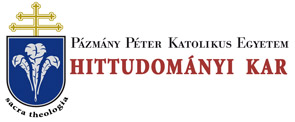Folia Theologica et Canonica 10. 32/24 (2021)
Ius canonicum
126 ALBERTO SORIA JIMENEZ, OSB do not have their own hierarchy or canonical rules. In other words, it will be the task of the liturgical theologians to offer convincing and satisfactory arguments on the possibility of differentiating or not between the two Roman Liturgical Rites, but it is undeniable that this is not the most important theological issue that the post-conciliar liturgical reform raises. Joseph Ratzinger was also ahead of many in these matters, although it is true that neither in SP nor in GF can one find any trace of the stronger expressions used before the election of the theologian cardinal to the Chair of St. Peter in 2005. At the same time, however, one can confidently state that the new outlook that Benedict XVI gives on the unity of the Roman Rite is certainly not the fruit of no previous thought or of excessive urgency. As cardinal, Joseph Ratzinger participated in at least three curial meetings where the subject of the status quo of the 1962 Roman Missal was discussed, and a few decades before SP was promulgated, he gave a certain amount of thought to the issue in his writings, conferences and declarations. He even put forward his own personal solutions to this delicate debate, removed from all the intellectual dilettantism, such as that of those who wish to get rid of an uncomfortable issue. In his state as a mere priest, in 1976 Ratzinger wrote a personal letter in reply to Prof. Wolfgang Waldstein, not yet published in its entirety in its original version, which contains the seed, and which anticipates, if not in its formulation, at least in the practical effects of the promulgation of SP. In it he already proposed “to obtain the permission for all priests to use the old Missal, also in the future, on condition that they also recognised the validity of the new Missal”.12 In this sense, we could consider SP to be the authors’ mature “point of arrival” after much thought on the subject. V. The Magisterial Teaching of the Motu Proprio Summorum Pontificum The influence Joseph Ratzinger had on the compilation of the Catechism of the Catholic Church (=CCCj is well known, and on reading it one can get the impression that some of the seeds sown there germinate in SP in three specific applications about the unity of the Roman Rite. Firstly, the liturgical aspect, 12 The letter is dated December 14th 1976, in Regensburg; cf. Ratzinger, J., Lettera del Prof. dott. Joseph Ratzinger at Prof. dott. Wolfgang Waldstein, in Chiesa Viva 14/140 (1984) 6. Here he writes: “The Missal of Pius V was not a new missal, but a form of the Roman Missal in use in the town, corrected only very slightly, according to the sources; in other words, nothing more than a growth circle of the old trunk, developing in a straight line according to a process which comes to us from the times of Hippolytus. For that reason, I feel that talking about the Tridentine Mass and the Missal of Pius Vis historically false and theologically fatal”.
